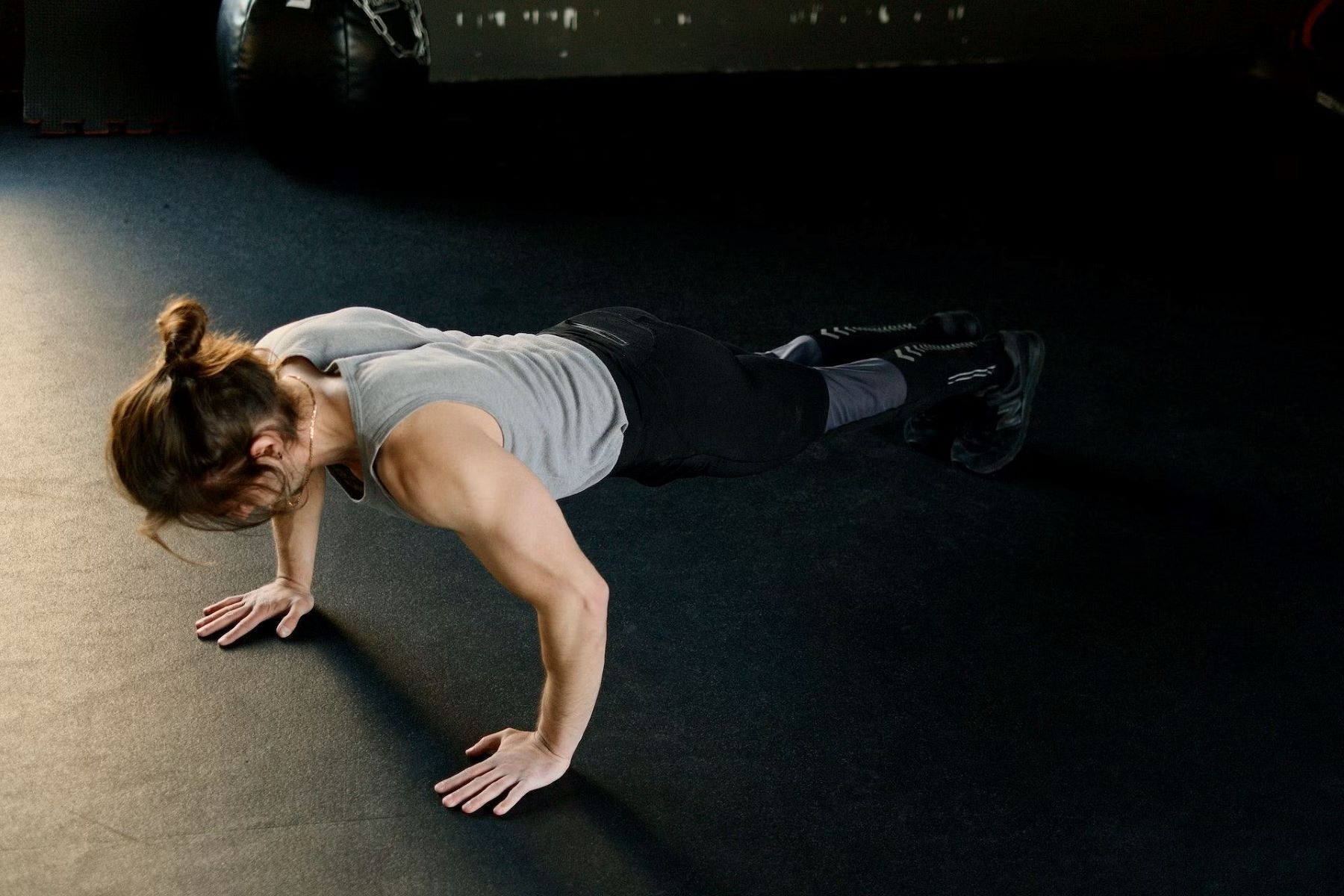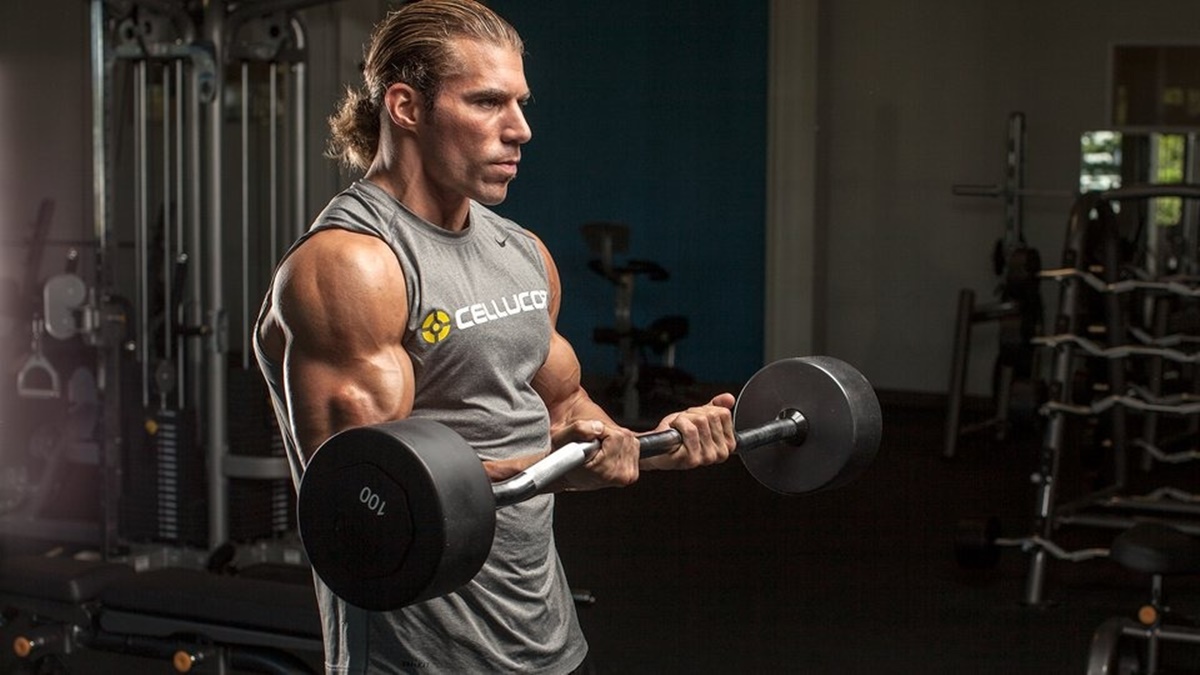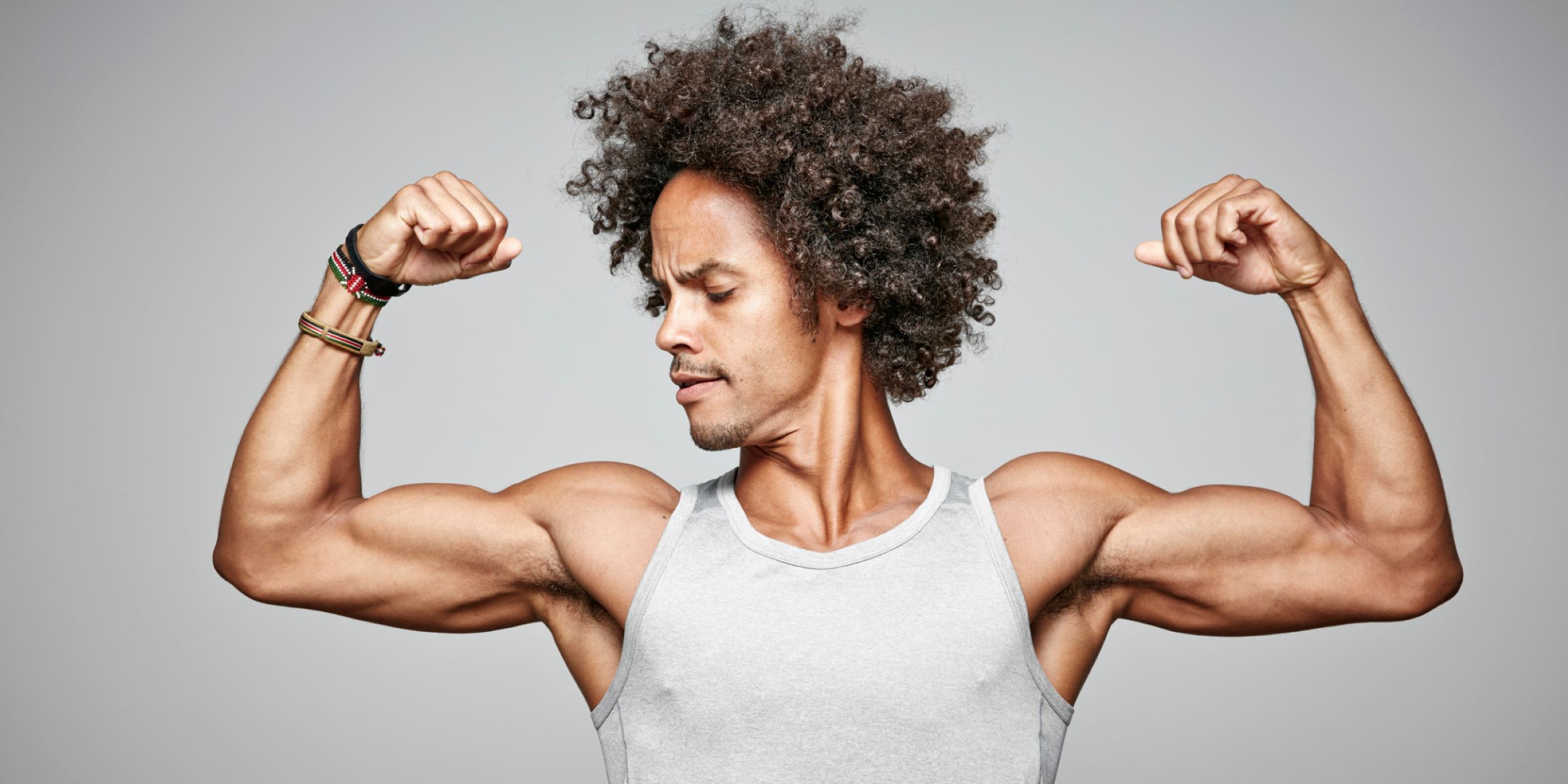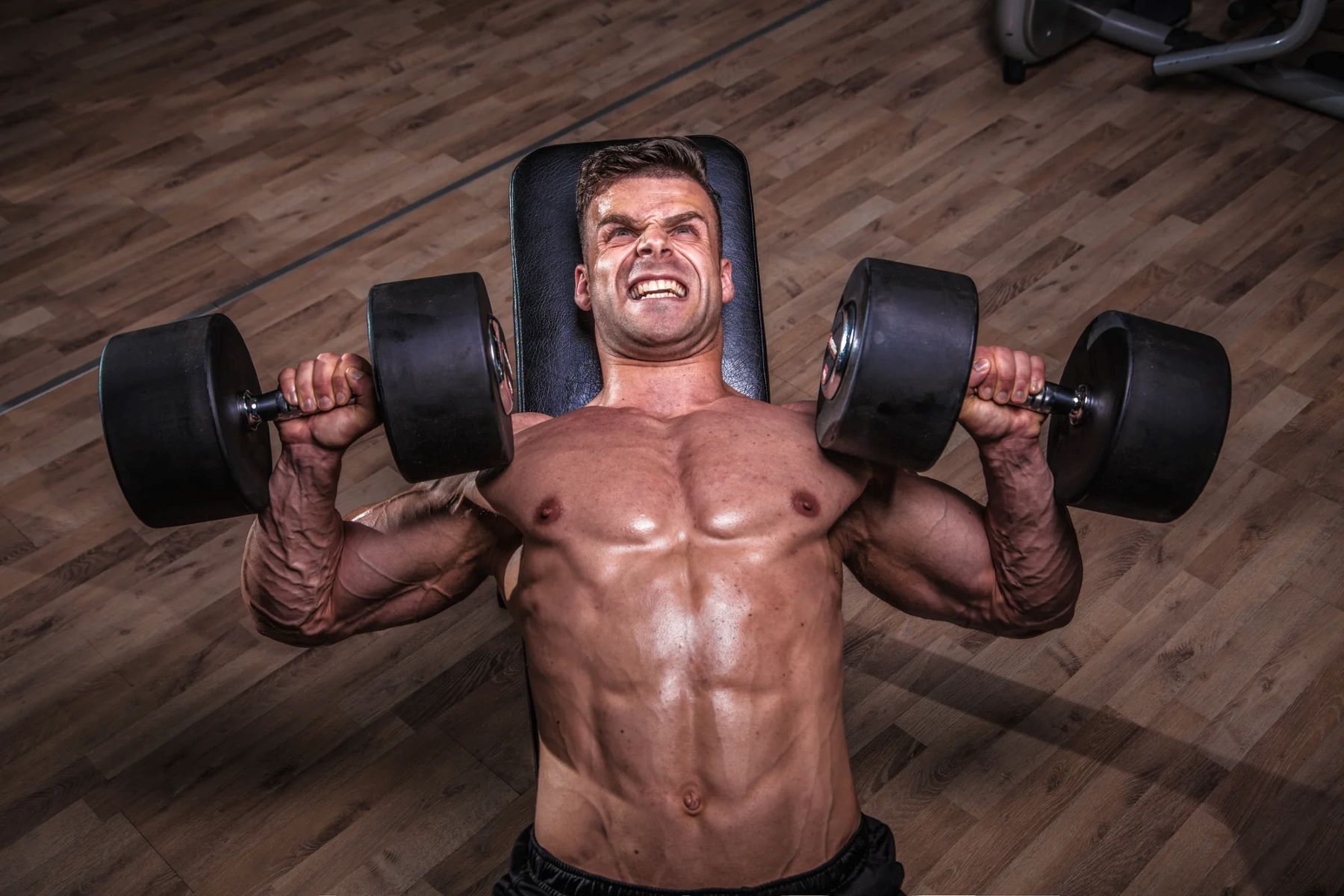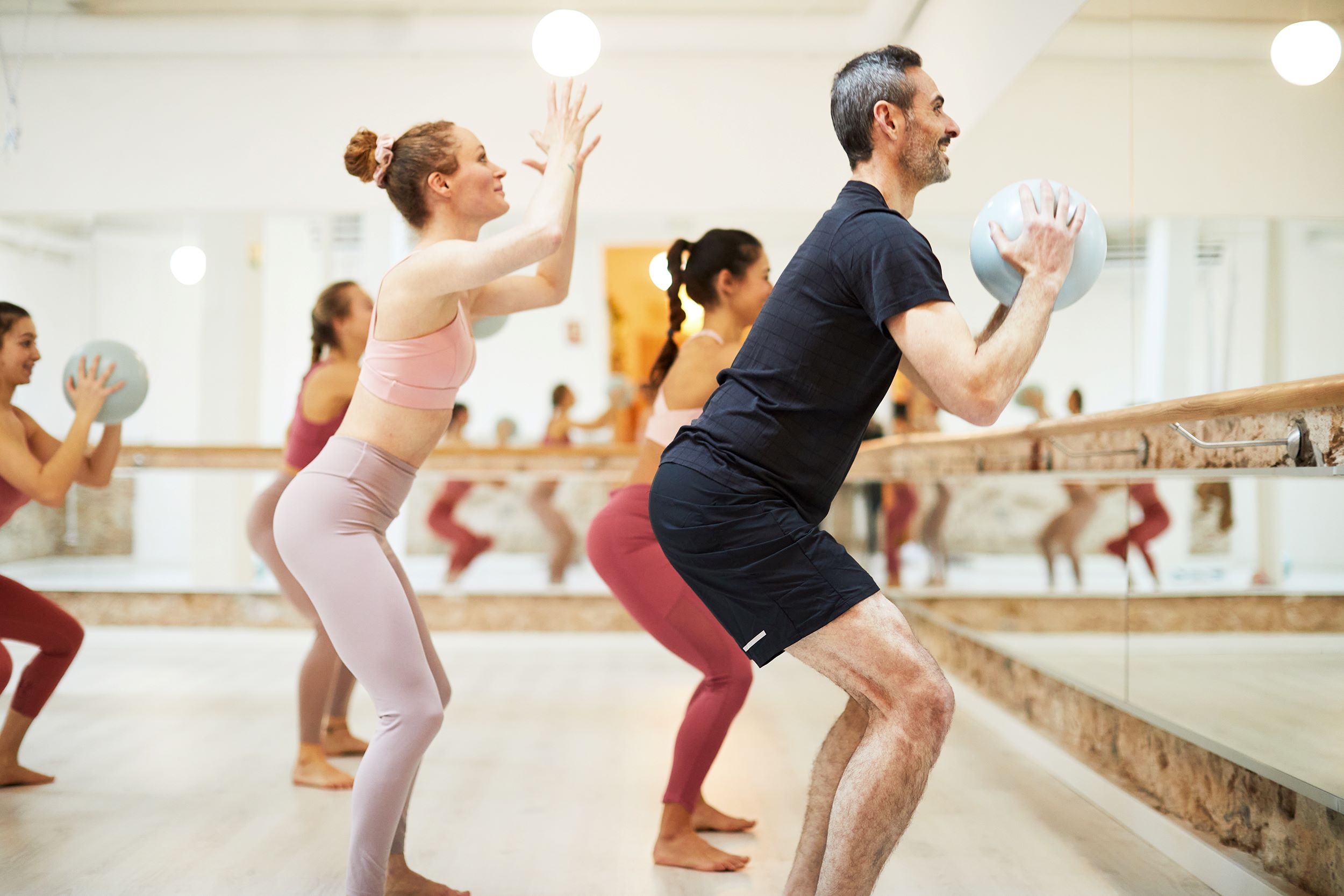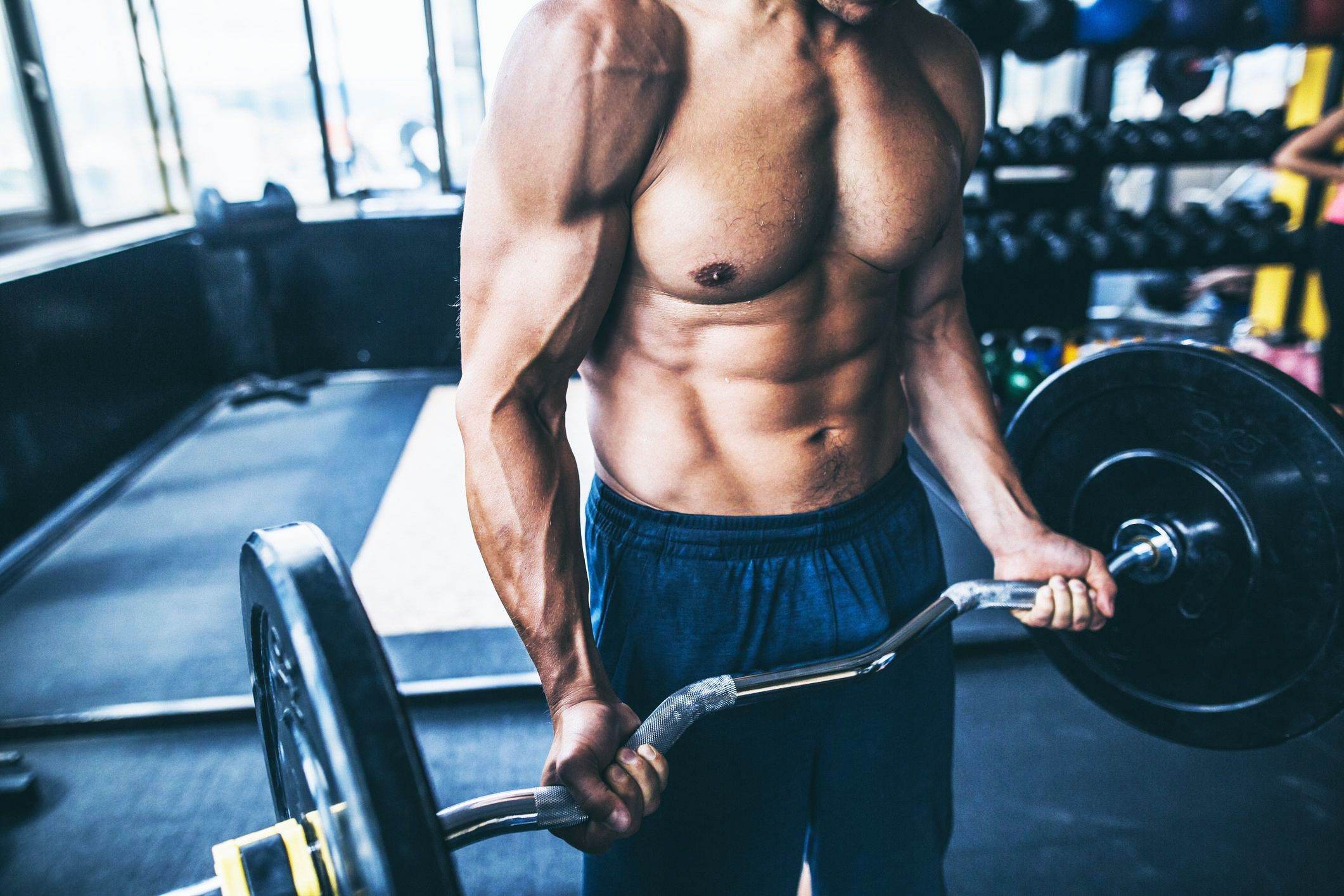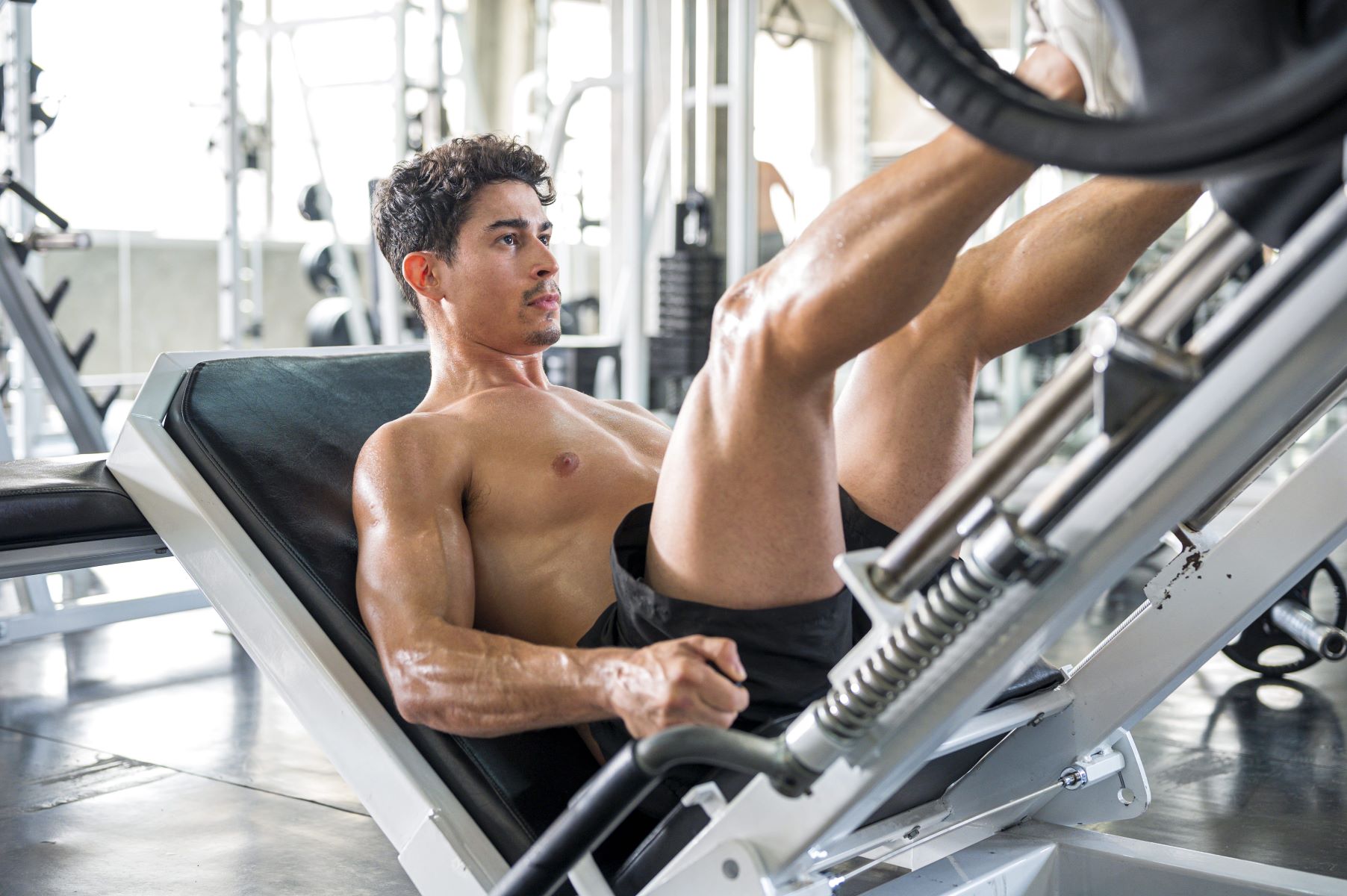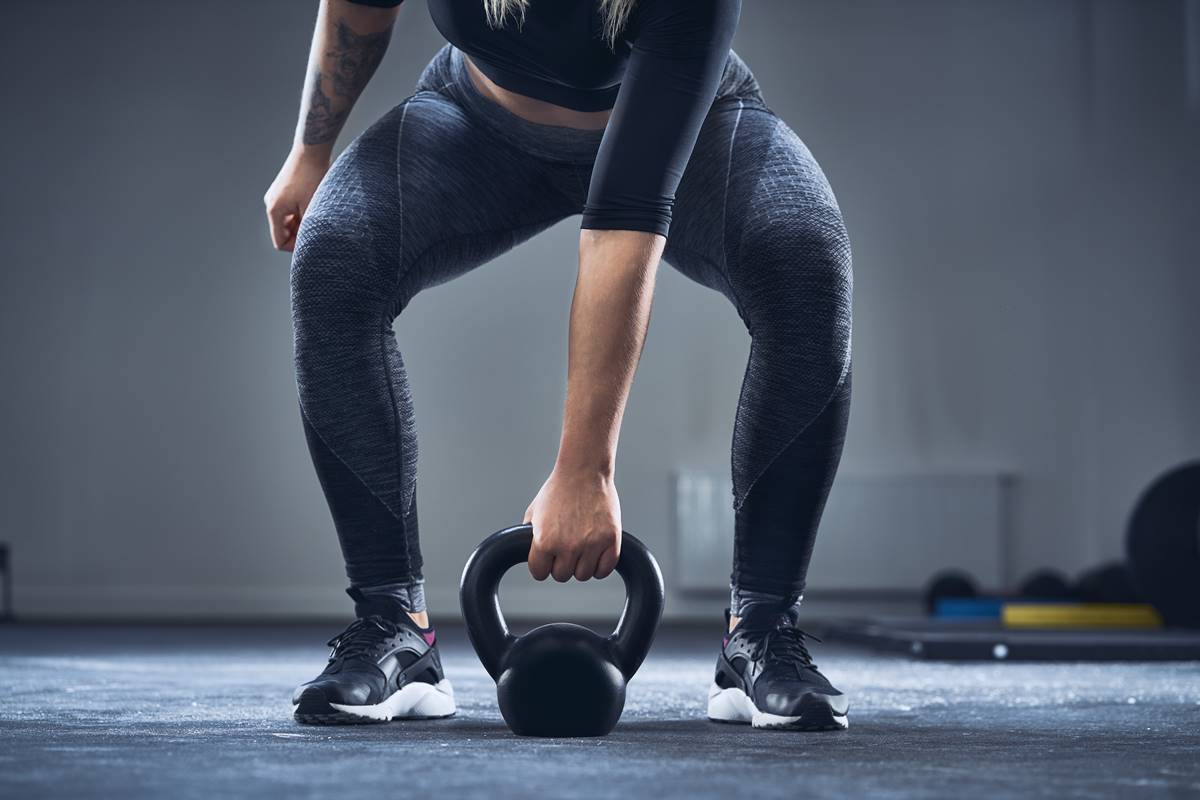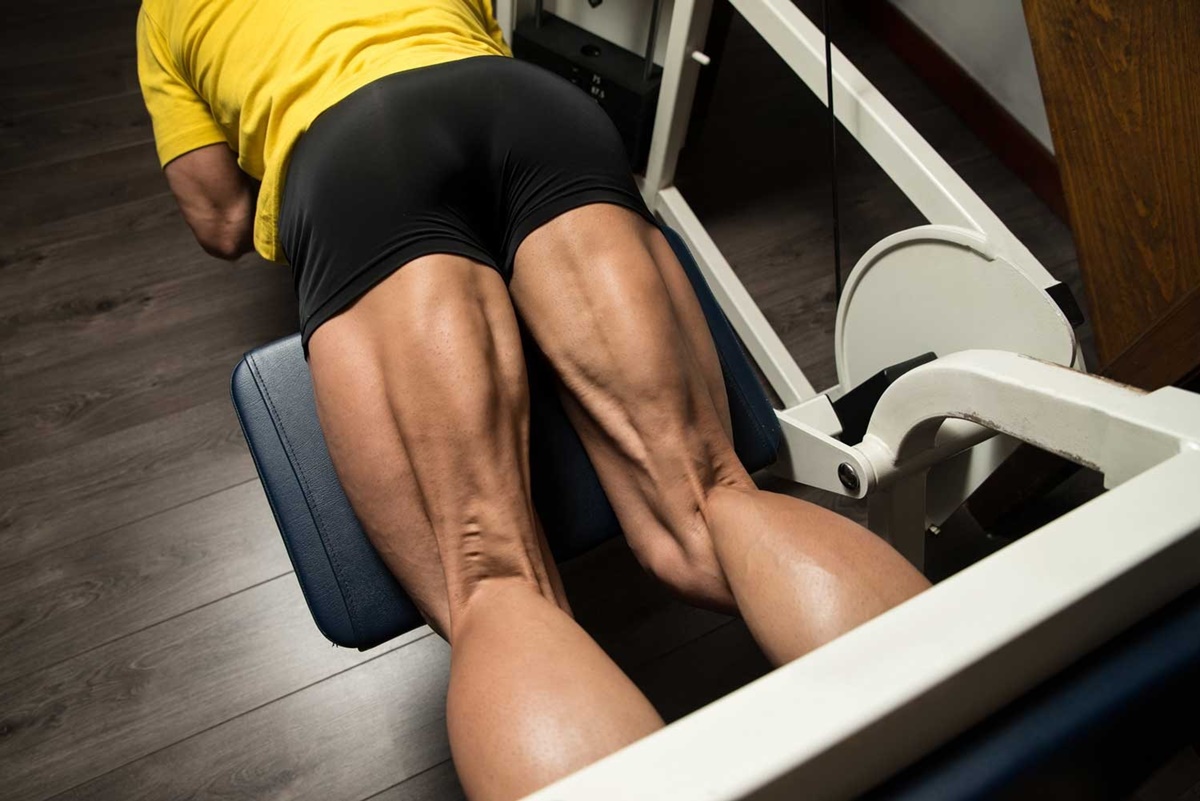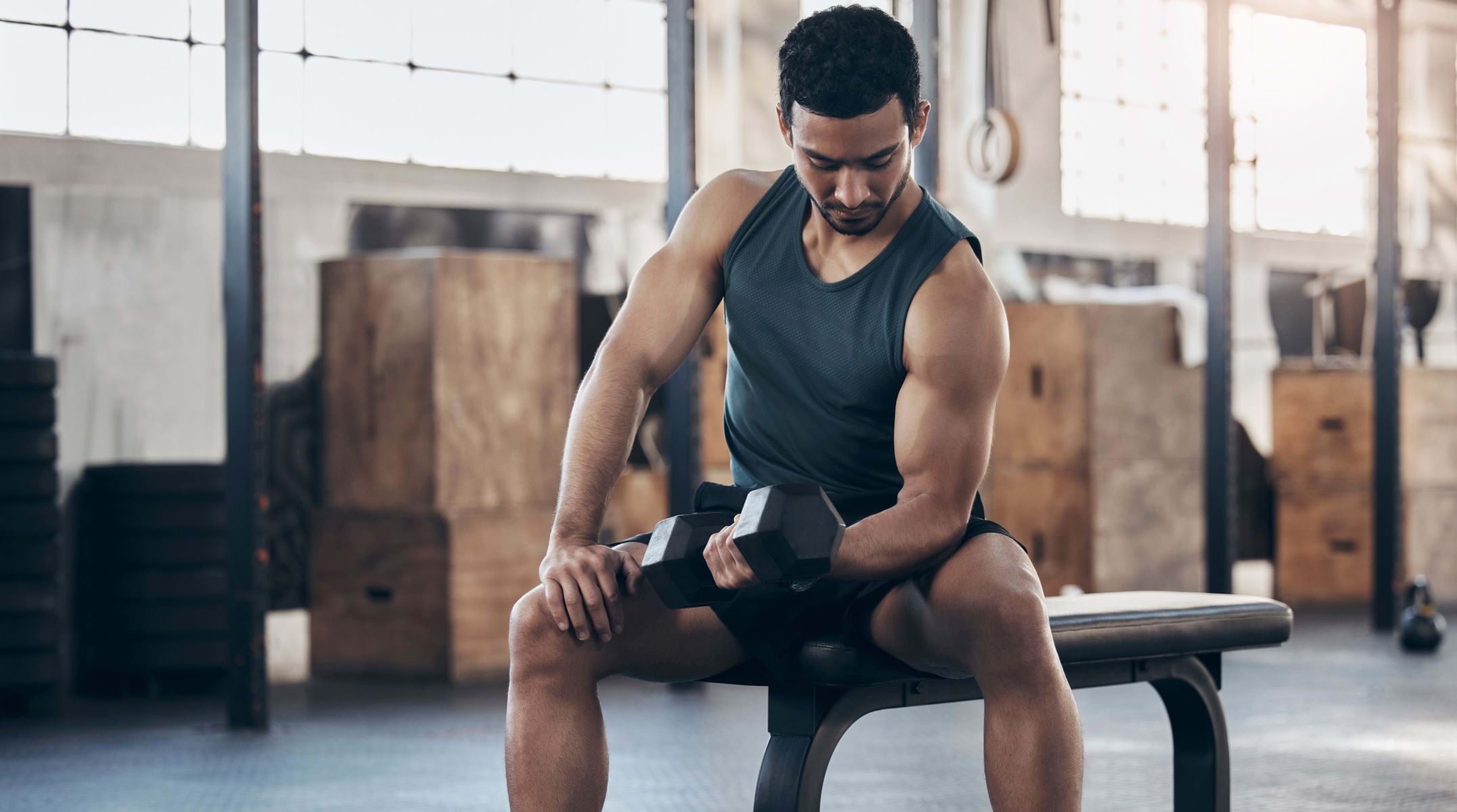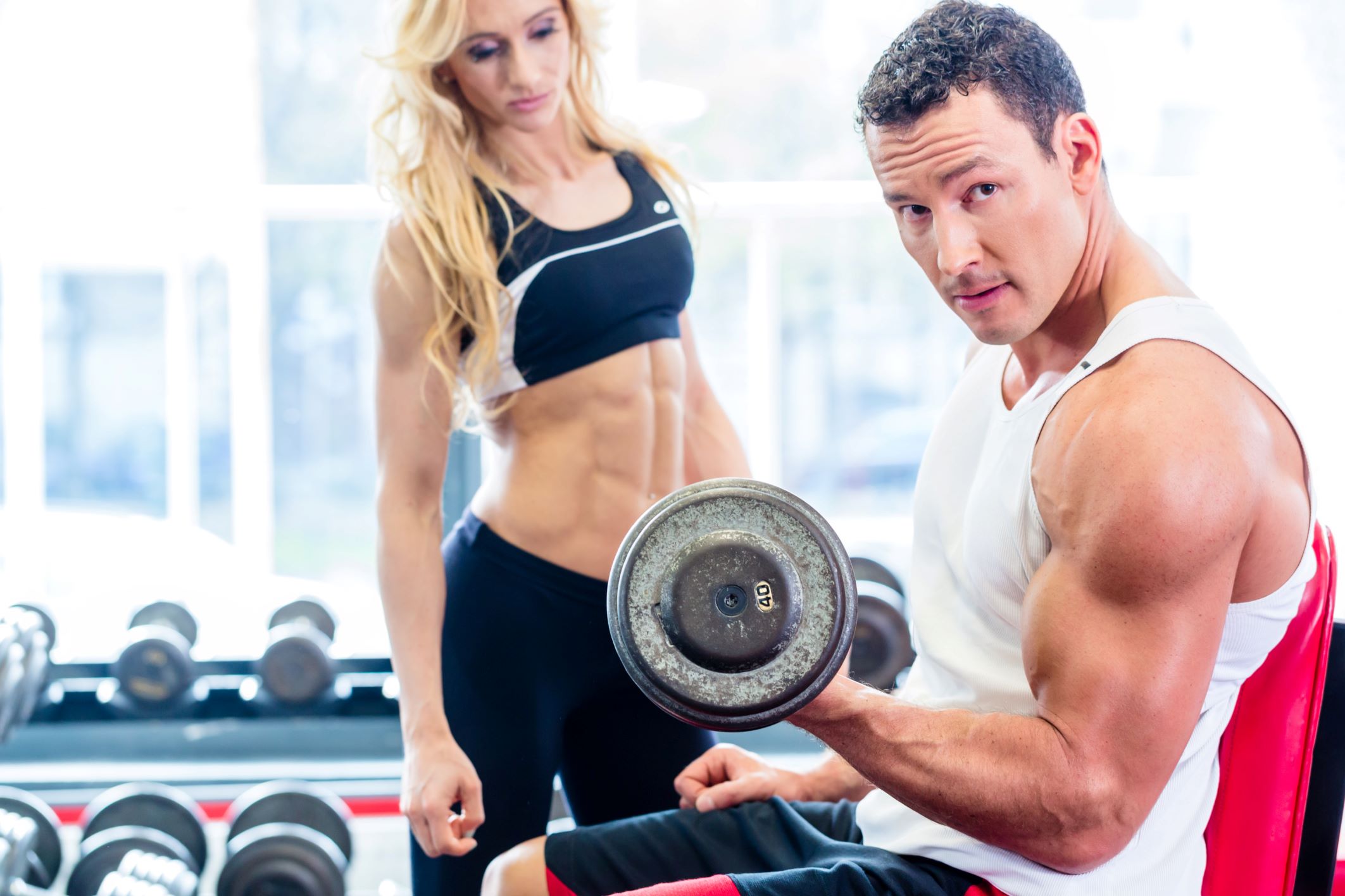

Featured
How To Workout Outer Bicep
Modified: January 2, 2024
Learn how to effectively target your outer biceps with our featured workout program. Transform your arms and achieve defined muscles with our expert exercises and tips.
Introduction
Welcome to the world of fitness and strength training! If you’re looking to build and sculpt your upper arms, specifically targeting the outer bicep, you’ve come to the right place. The outer bicep is an often overlooked muscle that can greatly enhance the overall appearance and definition of your arms.
When it comes to bicep training, many people focus solely on the classic dumbbell curls or barbell curls, neglecting the unique benefits that targeting the outer bicep can provide. By incorporating specific exercises that isolate and engage the outer bicep, you can develop a more balanced and aesthetic arm physique.
Understanding the anatomy and function of the outer bicep is essential for effective training. The outer bicep, or the long head of the biceps brachii muscle, is located on the outer side of your upper arm. It runs from the shoulder to the elbow, adding width and shape to the bicep.
Training this muscle group offers numerous benefits. Firstly, it helps to develop overall arm strength and stability. The outer bicep is vital for performing pulling and lifting movements, making it essential for activities such as lifting weights, carrying objects, or even performing everyday tasks like opening doors or pulling yourself up.
Moreover, focusing on the outer bicep adds width and definition to the upper arm, creating a more well-rounded and aesthetically pleasing appearance. By targeting this specific muscle group, you can achieve a sculpted and proportionate look that enhances your overall physique.
Before diving into the exercises, it’s important to warm up to prevent any injury and optimize your performance. A good warm-up routine should include dynamic stretches and some light cardio exercises to increase blood flow and prepare your muscles for the upcoming workout.
So get ready to embark on this journey to strengthen and sculpt your outer biceps. In the following sections, we’ll explore various exercises, techniques, and tips to help you maximize your workout and achieve your fitness goals.
Understanding the Outer Bicep
To effectively train the outer bicep, it’s crucial to have a solid understanding of the muscle’s anatomy and function. The outer bicep, also known as the long head of the biceps brachii, is one of the two primary muscles that make up the biceps. It runs along the outer side of the upper arm, connecting the shoulder and the elbow joint.
The outer bicep plays a crucial role in various arm movements, particularly those that involve lifting and pulling. When you bend your elbow, the outer bicep contracts, causing the arm to shorten and bringing the forearm closer to the upper arm. This motion is known as flexion.
In addition to flexion, the outer bicep also assists with forearm supination, which is the rotation of the forearm so that the palm faces upward. This movement is often used when performing exercises like hammer curls or twisting motions.
The outer bicep is a relatively small muscle compared to its counterpart, the inner bicep or short head. However, developing the outer bicep can greatly enhance the overall appearance and symmetry of the arm. It adds width and definition, creating a more rounded and sculpted look.
It’s worth noting that the biceps brachii muscles don’t work in isolation. They work in concert with other muscles in the upper body, such as the brachialis and brachioradialis muscles. The brachialis muscle, located underneath the biceps, is responsible for flexing the elbow joint and contributes to the overall thickness of the upper arm.
Properly targeting the outer bicep can be challenging, as many conventional bicep exercises primarily engage the inner bicep. However, by incorporating specific exercises that isolate and place more emphasis on the outer bicep, you can achieve a more balanced and aesthetic arm physique.
In the next sections, we’ll explore effective exercises that specifically target the outer bicep, along with tips on how to perform them correctly and avoid common mistakes. By incorporating these exercises into your routine, you’ll be well on your way to developing strong, defined, and eye-catching outer biceps.
Benefits of Training the Outer Bicep
When it comes to strength training, many individuals tend to prioritize exercises that target the primary muscles, such as the chest, back, and legs. However, focusing on the outer bicep can yield numerous benefits and contribute to a well-rounded and aesthetically pleasing physique.
1. Enhanced Arm Strength: Training the outer bicep helps to develop overall arm strength and stability. This is crucial for performing pulling and lifting movements, such as picking up heavy objects or performing exercises like pull-ups or rows. Strengthening the outer bicep improves your ability to perform these tasks effectively and with less strain on the muscles and joints.
2. Improved Aesthetic Appearance: The outer bicep plays a significant role in the overall appearance of the arms. By targeting and developing this muscle group, you can add width and shape to your upper arms. This creates a more well-rounded and sculpted look, contributing to a visually appealing physique. A balanced development of both the inner and outer bicep muscles helps create a proportional and symmetrical appearance.
3. Functional Benefits: Strong and well-developed outer biceps not only improve your physical appearance but also have practical benefits in everyday life. Activities like lifting heavy grocery bags, carrying luggage, or even performing routine tasks such as opening doors become easier when your outer biceps are strong. By incorporating exercises that target the outer bicep, you enhance your overall functional fitness and make daily activities more manageable.
4. Improved Athletic Performance: A strong outer bicep can improve your performance in various sports and physical activities. Whether you’re engaging in activities that require throwing, pulling, or swinging motions, such as baseball, tennis, or golf, a well-developed outer bicep can enhance your power, speed, and control. Additionally, a strong outer bicep contributes to overall upper body stability, which is essential for maintaining balance and supporting movements across a range of sports.
5. Injury Prevention: Strengthening the outer bicep helps to stabilize and support your shoulder joints. This can reduce the risk of common shoulder injuries, such as rotator cuff strains or impingements. By maintaining balanced muscle strength and improving shoulder stability, you create a more resilient and injury-resistant upper body.
By incorporating exercises that focus on the outer bicep into your workout routine, you can enjoy these benefits and take your arm training to the next level. In the following sections, we’ll explore various exercises that specifically target the outer bicep, allowing you to maximize your training efforts and achieve your desired results.
Warm-up Exercises
Before diving into your outer bicep workout, it’s essential to warm up your muscles and prepare them for the upcoming physical activity. A proper warm-up routine not only reduces the risk of injury but also enhances your performance during the workout. Here are some effective warm-up exercises to incorporate before targeting your outer biceps:
1. Arm Circles: Stand with your feet shoulder-width apart and extend your arms out to the sides. Begin making small circles with your arms, gradually increasing the size of the circles. Do 10-15 circles in each direction to gently warm up the shoulder and upper arm muscles.
2. Forward Bend with Arm Reach: Stand with your feet hip-width apart and slowly bend forward from the waist, reaching for your toes. As you reach down, simultaneously extend your arms straight out in front of you. Hold this position for a few breaths, feeling the stretch in your hamstrings and shoulders. This exercise helps to warm up your entire upper body.
3. Jumping Jacks: Perform a few sets of jumping jacks to elevate your heart rate, increase blood flow, and warm up your entire body. This dynamic exercise engages both your upper and lower body, preparing your muscles for the upcoming workout.
4. Shoulder Rotations: Stand tall and roll your shoulders forward in a circular motion. After a few rotations, switch to backward shoulder rotations. This exercise helps to loosen up the shoulder joints and activates the surrounding muscles.
5. Light Cardio: Engaging in a few minutes of light cardio, such as jogging in place, jumping rope, or cycling, increases blood circulation and raises your body temperature. This helps to warm up your muscles and prepare them for more intense physical activity.
Remember to focus on proper form and perform each warm-up exercise in a controlled manner. Start with lighter intensity and gradually increase the intensity as your body warms up. Give yourself at least 5-10 minutes to complete the warm-up exercises before moving on to the main part of your outer bicep workout.
By incorporating these warm-up exercises into your routine, you’ll activate the muscles, increase flexibility, and prepare your body for a safe and effective outer bicep training session. So take the time to warm up properly and reap the benefits of a well-prepared body during your workout.
Basic Outer Bicep Exercises
When it comes to training the outer bicep, there are several fundamental exercises that can effectively isolate and target this muscle group. These exercises focus on the outer portion of the bicep, helping to add width and shape to your upper arms. Here are some basic outer bicep exercises to incorporate into your workout routine:
1. Hammer Curls: Stand with your feet shoulder-width apart, holding a pair of dumbbells by your sides with a neutral grip (palms facing each other). Keeping your elbows close to your body, slowly curl the dumbbells towards your shoulders while maintaining a neutral grip. Squeeze your biceps at the top of the movement, then slowly lower the weights back to the starting position. This exercise primarily targets the outer bicep and also engages the brachialis muscle.
2. Preacher Curls: Sit on a preacher curl bench and place your upper arms on the pad with your chest against it. Hold a barbell with an underhand grip, shoulder-width apart. Keeping your upper arms stable on the pad, curl the barbell towards your shoulders while squeezing your biceps. Pause for a moment at the top, then slowly lower the barbell back to the starting position. Preacher curls isolate the biceps and place emphasis on the outer portion.
3. Concentration Curls: Sit on a bench or chair, holding a dumbbell in one hand. Place your elbow on the inner thigh of the same side, allowing the dumbbell to hang in front of you. With your palm facing upward, curl the dumbbell towards your shoulder while keeping your upper arm stationary. Squeeze the outer bicep at the top of the movement, then slowly lower the dumbbell back to the starting position. Concentration curls provide a deep contraction in the outer bicep.
4. Standing Cable Curls with Rope Attachment: Stand in front of a cable machine with a rope attachment at about hip height. Grasp the rope with an underhand grip, shoulder-width apart. Keeping your elbows close to your sides, curl the rope towards your shoulders. Focus on squeezing the outer bicep and maintaining control throughout the movement. Slowly lower the rope back to the starting position. Cable curls with a rope attachment provide constant tension on the outer bicep.
These exercises can be performed in a straight set fashion (completing all sets and reps of one exercise before moving on to the next) or as part of a circuit routine. Aim for 8-12 repetitions per set and perform 3-4 sets of each exercise with an appropriate weight that challenges your muscles.
Remember to focus on maintaining proper form, controlling the movement, and feeling the contraction in your outer biceps. If you’re a beginner, start with lighter weights and gradually increase the resistance as you progress.
Incorporating these basic outer bicep exercises into your workout routine will help you build strength, shape, and definition in your upper arms. As you become comfortable and proficient with these exercises, you can explore more advanced variations to further challenge your muscles.
Advanced Outer Bicep Exercises
Once you’ve built a solid foundation with the basic outer bicep exercises, you may be ready to take your workout to the next level with more advanced exercises. These exercises provide a greater challenge to your outer biceps, promoting further strength and muscle development. Here are some advanced outer bicep exercises to consider incorporating into your routine:
1. Spider Curls: This exercise is a variation of the traditional preacher curl. Set an adjustable bench to a 45-degree incline and position yourself facing down with your chest against the bench. Hold a barbell with an underhand grip, arms extended straight down, and let it hang in front of you. Curl the barbell towards your shoulders while keeping your upper arms against the bench. Squeeze your outer biceps at the top of the movement and slowly lower the barbell back to the starting position.
2. Zottman Curls: Stand with your feet shoulder-width apart, holding a pair of dumbbells by your sides with an underhand grip (palms facing up). Begin by curling the dumbbells towards your shoulders, squeezing your biceps at the top of the movement. At this point, rotate your wrists so that your palms face downward, then slowly lower the dumbbells back to the starting position, maintaining control throughout the eccentric phase. In the next repetition, rotate your wrists back to the underhand grip position before curling the dumbbells.
3. Reverse Grip Barbell Curls: Stand with your feet shoulder-width apart, holding a barbell with an overhand grip (palms facing down), hands about shoulder-width apart. Keep your upper arms stationary and curl the barbell towards your shoulders, squeezing your outer biceps at the top of the movement. Slowly lower the barbell back to the starting position with control. Reverse grip barbell curls place more emphasis on the outer bicep and engage the brachialis and brachioradialis muscles as well.
4. Cross Body Hammer Curls: Hold a pair of dumbbells by your sides with a neutral grip (palms facing each other). Curl one dumbbell towards the opposite shoulder while keeping your elbow stationary and close to your body. Squeeze the outer bicep at the top of the movement, then slowly lower the dumbbell back to the starting position. Repeat the movement with the other arm. This exercise targets the outer bicep and also engages the brachialis muscle.
5. Chin-ups: Although primarily an upper back and lat exercise, chin-ups also engage the biceps significantly, including the outer bicep. Grab the pull-up bar with an underhand grip (palms facing you), hands slightly wider than shoulder-width apart. Hang from the bar with your arms fully extended. Engage your back and biceps, pulling your body up until your chin clears the bar. Slowly lower yourself back down with control. Chin-ups can be challenging, so if you’re unable to do them unassisted, you can use a resistance band for assistance or practice negatives (lowering yourself slowly) to build strength.
Be sure to choose weights or resistance that challenges you within the recommended rep range, typically 8-12 reps per set. As with any exercise, maintaining proper form and technique is crucial for safety and effectiveness. If you’re not familiar with these exercises, it’s advisable to work with a qualified fitness professional who can guide you through the proper execution.
Incorporating these advanced outer bicep exercises into your routine will provide a greater stimulus to your muscles, leading to increased strength and definition. Remember to prioritize proper form, gradually progress in weight or resistance, and listen to your body’s limitations and individual needs.
Tips for Effective Outer Bicep Workout
To ensure an effective outer bicep workout and maximize your results, it’s important to keep a few key tips in mind. These tips will help you optimize your training and make the most out of your efforts. Here are some tips to consider:
1. Mind-Muscle Connection: Focus on establishing a strong mind-muscle connection with your outer biceps during each exercise. Visualize the muscle working and concentrate on feeling the contraction in the targeted area. This mental connection will help you engage the outer biceps more effectively and enhance your overall training results.
2. Maintain Proper Form: Proper form is crucial for any exercise, including those targeting the outer biceps. Ensure that you’re using correct posture, keeping your back straight, and engaging your core muscles. Avoid excessive swinging or using momentum to lift the weight. By maintaining proper form, you will place more emphasis on the target muscles and reduce the risk of injury.
3. Range of Motion: Aim for a full range of motion during each repetition. Keep the movement controlled throughout, both during the concentric (lifting) and eccentric (lowering) phases. For example, when performing curls, fully extend your arms at the bottom and squeeze your outer biceps at the top. This complete range of motion will maximize muscle activation and promote better muscle development.
4. Progressive Overload: As with any training, gradually increase the resistance or weight you’re using over time. This concept, known as progressive overload, helps to continually challenge and stimulate your muscles for growth. Ensure that the weight you choose allows you to complete the desired number of repetitions with proper form, but is challenging enough to feel fatigued by the last few reps.
5. Vary Your Training: Don’t be afraid to mix up your exercises and training methods. Incorporate different variations of outer bicep exercises, such as using various grips or angles, to target the muscle from different angles and challenge it in different ways. Additionally, consider incorporating different training techniques, such as drop sets or supersets, to further intensify your workout and stimulate muscle growth.
6. Balanced Training: While it’s important to target and develop the outer biceps, don’t neglect the other muscles in your upper body. Aim for a balanced training routine that includes exercises for the inner biceps, as well as other muscles such as the triceps, shoulders, and back. This balanced approach will help create overall symmetry and prevent muscle imbalances.
7. Rest and Recovery: Allow your muscles ample time to rest and recover between workouts. Muscles grow and repair during periods of rest, so ensure you’re getting enough sleep and allowing at least 48 hours of recovery time before training the same muscle group again. Overtraining can hinder progress, so listen to your body and prioritize rest.
By implementing these tips into your outer bicep training, you’ll be well-equipped to maximize your results and achieve stronger, more defined arms. Remember to approach your workouts with consistency, patience, and dedication, as progress takes time. With time and consistent effort, you’ll see noticeable improvements in the strength and aesthetics of your outer biceps.
Common Mistakes to Avoid
When it comes to training the outer biceps, it’s important to be aware of common mistakes that can hinder your progress or lead to injury. By avoiding these mistakes, you can ensure that your workouts are effective and safe. Here are some common mistakes to watch out for when targeting your outer biceps:
1. Using Excessive Momentum: One of the most common mistakes is using excessive momentum to lift the weights. Swinging or using jerking motions not only takes the focus away from the targeted muscles but also increases the risk of injury. Instead, focus on using controlled movements and engaging the outer biceps to lift the weight. Slow and steady movements will yield better results.
2. Neglecting Proper Form: Poor form is a recipe for both ineffective training and potential injury. Avoid using improper lifting techniques, such as rounding your back, arching your shoulders, or hunching over. Maintain proper posture, stabilize your core, and concentrate on proper form throughout each exercise. This ensures that your outer biceps are being properly engaged and that other muscles are not compensating.
3. Neglecting the Full Range of Motion: Another mistake is not utilizing the full range of motion during the exercises. Failing to fully extend your arms at the starting position or not fully contracting your biceps at the top of the movement limits the effectiveness of the exercise. Move through the complete range of motion to maximize muscle activation and engagement.
4. Overtraining or Undertraining: Finding the right balance in training frequency is crucial. Overtraining, or not allowing enough recovery time for your muscles, can impede progress and increase the risk of injury. On the other hand, undertraining or not challenging yourself enough will limit your results. Aim for 2-3 workouts per week, allowing for adequate rest and recovery between sessions.
5. Neglecting Other Muscle Groups: While focusing on the outer biceps is important, neglecting other muscle groups can lead to imbalances and hinder overall progress. Make sure to incorporate exercises that target not only the inner biceps but also the muscles of the back, shoulders, and triceps. A balanced approach to training will lead to better overall muscle development.
6. Not Listening to Your Body: Pay attention to your body’s signals and listen to what it needs. Pushing through pain or ignoring signs of fatigue can lead to injury or overtraining. It’s important to distinguish between discomfort from muscle fatigue and actual pain. If something feels off or uncomfortable, adjust your technique or seek advice from a qualified fitness professional.
7. Neglecting Proper Nutrition and Recovery: It’s easy to focus solely on the physical aspect of training, but proper nutrition and recovery are equally important. Fuel your body with a balanced diet that includes enough protein, carbohydrates, and healthy fats to support muscle growth and repair. Additionally, prioritize rest and recovery, ensuring you get enough sleep and allowing your body time to heal and rejuvenate.
By avoiding these common mistakes, you’ll be able to optimize your outer bicep training, reduce the risk of injury, and achieve better overall results. Remember to prioritize proper form, listen to your body, and give yourself the rest and recovery you need to maximize your gains.
Incorporating Outer Bicep Exercises into Your Workout Routine
Now that you’re familiar with the various outer bicep exercises and have learned how to perform them correctly, it’s time to incorporate them into your workout routine. By strategically integrating these exercises into your training plan, you can effectively target and develop your outer biceps. Here’s how to incorporate outer bicep exercises into your workout routine:
1. Determine Training Frequency: Decide how many times per week you want to train your biceps, keeping in mind the need for adequate rest and recovery. For most individuals, 2-3 workouts per week should be sufficient to stimulate muscle growth and promote strength development.
2. Appropriate Exercise Selection: Choose a variety of outer bicep exercises to include in your workouts. As mentioned earlier, basic exercises like hammer curls, preacher curls, concentration curls, and cable curls with a rope attachment are great options. Additionally, you can incorporate advanced exercises like spider curls, Zottman curls, reverse grip barbell curls, and chin-ups to further challenge your muscles.
3. Warm-Up: Prior to each workout, make sure to warm up your muscles with dynamic stretches and light cardiovascular exercises. This will prepare your body for the upcoming workout and help prevent injuries.
4. Exercise Order: It’s generally recommended to start your workout with compound exercises that engage multiple muscle groups, such as chin-ups or pull-ups. Then, move on to isolation exercises that specifically target the outer biceps, such as hammer curls or concentration curls. This sequence allows you to prioritize energy and strength towards the more demanding exercises while maintaining proper form.
5. Sets and Repetitions: Aim for 3-4 sets of each exercise, performing 8-12 repetitions per set. This rep range is optimal for muscle hypertrophy and strength development. Adjust the weight or resistance level to ensure you reach muscle fatigue within the desired rep range.
6. Rest between Sets: Allow for adequate rest between sets, typically around 60-90 seconds. This rest period allows your muscles to partially recover before engaging them again, ensuring quality repetitions and maximizing results.
7. Progressive Overload: Over time, aim to gradually increase the weight or resistance you’re using to continually challenge your muscles. This concept of progressive overload is essential for promoting muscle growth and strength gains.
8. Balanced Routine: Incorporate exercises that target both the inner and outer biceps to achieve balanced development. Additionally, include exercises for other muscle groups, such as the back, shoulders, and triceps, to support overall upper body strength and symmetry.
9. Listen to Your Body: Pay attention to how your body responds to the exercises and adjust accordingly. If a particular exercise causes discomfort or pain, consider modifying the movement or selecting an alternative exercise that targets the same muscle group.
10. Track Your Progress: Keep a record of your workouts and track your progress over time. This will enable you to monitor your strength gains, adjust your weights or resistance as necessary, and ensure continuous improvement.
Remember to consult with a qualified fitness professional if you’re new to exercise or have any specific concerns or limitations. They can provide personalized guidance and help you create a tailored workout routine that suits your individual needs.
Incorporating outer bicep exercises into your workout routine will help you develop stronger, more defined arms. With consistency and effort, you’ll see noticeable improvements in the shape, size, and strength of your outer biceps.
Conclusion
Training the outer bicep is a valuable component of any comprehensive upper body workout routine. By targeting this muscle group specifically, you can enhance the strength, size, and overall aesthetic appeal of your arms. Incorporating a variety of exercises, from basic to advanced, helps engage the outer biceps and promotes balanced development.
Understanding the anatomy and function of the outer bicep is essential for effective training. Additionally, avoiding common mistakes such as improper form, neglecting proper nutrition and recovery, and overtraining are crucial for safety and optimal results.
By incorporating warm-up exercises, maintaining proper form, and progressively overloading your muscles, you can ensure an effective and satisfying outer bicep workout. Varying your exercises, adjusting the number of sets and repetitions, and listening to your body’s needs will help you achieve the results you desire.
Remember that building stronger and more defined outer biceps takes consistency, patience, and dedication. Progress will not happen overnight, but with perseverance and a well-rounded training approach, you will see improvements over time.
So, lace up your gym shoes, grab your dumbbells or barbells, and embark on your journey to develop those outer biceps. Challenge yourself, focus on proper technique, and don’t forget to enjoy the process. Keep pushing your limits and soon you’ll reap the rewards of your hard work with stronger, more sculpted arms.
Now go out there, train smart, and let your impressive outer biceps speak for themselves. Reach new heights and confidently showcase your well-developed arms. You’re one step closer to achieving the strong and aesthetically pleasing physique you desire. Good luck!
